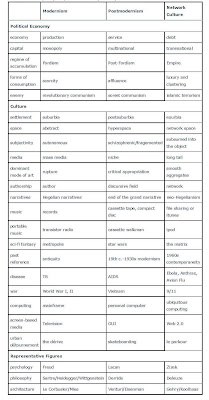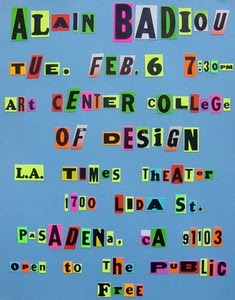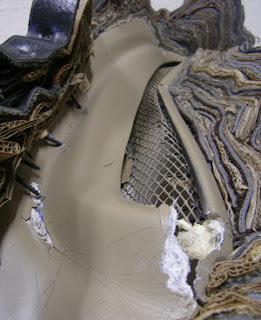
Thus, we base all the events in our lives on the continuum of our sorrows; we translate into the emotional language of continuity what would be more accurately expressed in the clear and trenchant narrative of objective events. Continuity is but our emotion, our unease, our melancholy, and the role of emotion is perhaps only to blunt ever-hostile newness (Gaston Bachelard, 2000, p. 60).
What qualified a piece for inclusion on the record was that it took me somewhere, but this might be somewhere that I'd never been before, or somewhere I'd only imagined going to….We feel affinities not only with the past, but also with the futures that didn’t materialize, and with the other variations of the present that we suspect run parallel to the one we have agreed to live in - Brian EnoDylan Trigg (author of The Aesthetics of Decay) has an excellent post at his blog Side Effects: Drones of Memory - "Drones" is a wonderful meditation on the interplay of time, memory, and music through the nuiances of nostalgia and artistic endeavor.
Trigg begins his post noting that the strange history of nostalgia has its origin as a medical condition experienced by Swiss soldiers in the 17th century. Native music was considered antithetical to recovery. The ensuing 300 hundred years have been no different in that the relationship between music, time, and memory is a constant aspect of our interior selves and our larger cultural/collective experiences within the frameworks of generation, sub-culture, and geography. It’s obvious that this relationship has actually intensified as the commoditization of the past is at a new zenith in the digital age - as if every I-pod is a time capsule of some sort and method.
Dylan Trigg:
The artificial containment of the past, as evidenced by its commoditisation, leads us to think more precisely about the relationship between memory and music. If music is able to invoke a different place and time, then what does this say about the musicality of memory itself? Two options present themselves. Firstly, we might want to think of music as merely an aid to remembering. In doing so, we would be positioning music in the classical tradition of ars memoria: a memory palace which places objects in a systematic and linear fashion. In discovering a previously stored piece of music, we would, therefore, be (re)discovering the thing (ourselves included) associated with that music….Trigg turns his attention to the past with these observations.
Yet in contrast to this comparatively reductive view on music and memory, we might also consider another option: that music gives form to memory. By this, I refer to the idea that the temporal structure of music consists of the same formal experience as that of memory. So that, in listening to music, we catch a sight of memory at work. Here too, the view has a distinguished history, not least because Henri Bergson persuasively aligned lived, intuitive time (durée) with musical melody, arguing that our experience of time mirrors the movement of notes “melting into one another” (Bergson, 2001, p. 100). Given Bergson’s conviction that both time and melody are interpenetrative states, the experience of duration becomes seamless. With this seamlessness, it follows that the shape of memory adopts a continuous and unbroken whole. Applied directly to musical melody, is it the case then, that the uninterrupted coherence of a melodic passage forms a structural symmetry with the formation of memory?
When we speak of a landscape of the past, it is accessed by recollection and therefore presupposes the containment of memory. Nostalgia has its own melodic structure whereby it can divide the past into unequivocal units of time. When we return to a time through music, we return to otherness – distant and distinct from the present. But to what extent does the melodic structure come to form an analogy with the nature of time?
Against the divisible tendency of nostalgia to split the past up into unity, so conferring a distinctly narratological aspect upon it, let us consider, if only as a working hypothesis, that such a mode of time is a nothing less than temporal superimposition. Bachelard’s correlation between emotion and continuity is fitting. Insofar as emotion imposes a qualitative dimension on the past, then it has the effect of binding time. With that gesture of binding, a distance is gained between ourselves and the past. At the same time, the suppression of “newness” can be understood in terms of a desire to retain the bordering properties of melody, and to exclude a future which dissents from those borders. Distance and containment, therefore, come to form the image of memory as continuous.Enter the ambient works of Brian Eno as representative of the drone as a counterpower to melody. If melody is understood to establish points of attachment for memory, the drone distinguishes itself as morphological rather than narratological. Trigg observes that a melodic phrase insulates with consolidated gestures demarcating the beginning and the end. The drone lacks these demarcations, creating surges and withdrawals -modulated textures of broken terrains. Here, time and movement are fundamentally suspended and memory blurred. What is left is a porous structure, a timescape where past and future converge simultaneously on the present. It is a gathering of time.
Taking Bachelard at his word, how would we approach the “ever-hostile newness” of time and memory in musical terms?
I want to think about how drones, in particular those we hear in ambient soundscapes, manage to contest a narratological structure, so returning us to an impression of time which correlates with Bachelard’s idea of duration as being a superimposition. If temporal continuity, so far a counterpart to the structure of melody, is said to conceal “the hatched lines of discontinuity,” (Ibid., p. 122) then what does the experiencing of listening to drones tell us about the relation between memory and its form?
Trigg concludes:
the self-digestion of Eno’s own compositions is an exterior expression of an internal movement within time itself. The reconstituted repetition of Eno’s ambient music is at once an appearance of time as haunting the present, but also of memory as assimilating the past in an uneven and discontinuous manner. Because of this digestion, the distinction between the past and the present becomes ambiguous. As formed from particles of the past, the drone erodes the narratological structure of time precisely through allowing the morphological overlapping of time to develop. The result is that time proceeds to move only through disjoining with memory. Finally then, the peculiarity of the drone is thus that it invites us to consider memory as movement turning on itself. In radical distinction to the ordering of melody, the drone does away with points of (place)-attachment, disclosing in the process a landscape which remains indebted to a past that can no longer be accessed in an original form.
...more on these thoughts soon
* on similiar topic of music built upon its previous forms see this post from Non-Prophet Art
image: Tomato



















